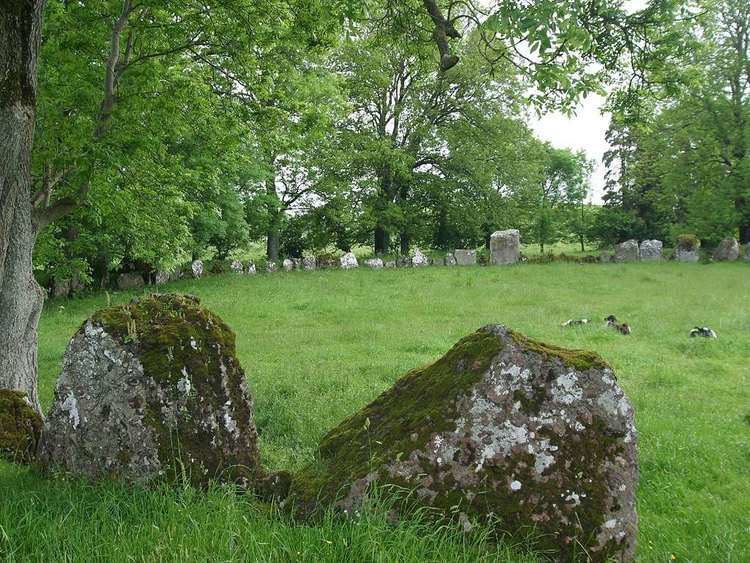 | ||
Similar Lough Gur, Gaulstown Portal Tomb, Meehambee Dolmen, The Bull Ring, Verziau of Gargantua | ||
Summer solstice dawn chorus at grange stone circle 2014
Grange stone circle (Lios na Gráinsí or Fort of the Grange) 300m west of Lough Gur in County Limerick, Ireland, is situated beside the Limerick-Kilmallock road, 4 km north of Bruff.
Contents
- Summer solstice dawn chorus at grange stone circle 2014
- Lough gur and grange stone circle
- Features
- References
Lough gur and grange stone circle
Features
The stone circle comprises a ring of continuous uprights up to 2.8m high, with a diameter of 45m and backed by an earthen bank 9m wide and about 1.2m tall. The entrance on the eastern side is paved and flanked by uprights. Clay has been packed down to a depth of 60 cm across the whole area of the enclosure. On excavation it was found to be littered with late Neolithic Beaker pottery, which seemed to have been deliberately smashed. Its near perfect shape and the discovery of a posthole in the very centre of the enclosure, indicates that the circle was measured out from a central stake with a rope. Twelve large orthostats have been placed at intervals around the stone ring, each standing directly opposite one of the other 'axial' stones. The stones are contiguous rather than free-standing, and the surrounding bank makes it look more like a form of henge monument than a conventional stone circle. This embankment and the precise arrangement of orthostats suggest that this site had a ritual purpose.
It is the largest standing stone circle in Ireland, 150 feet in diameter and enclosed by 113 standing stones. The largest stone is Rannach Chruim Duibh (Crom Dubh's Division) and is over 13 feet high and weighs 40 tons. The stone circle is aligned with the rising sun at the Summer Solstice on the morning of which the sun shines down directly in the centre of the circle. The entrance stones are matched by a pair of equally impressive slabs on the southwest side, whose tops slope down towards each other to form a v-shape. During excavations no structures were found but two hearths; a few un-burnt human bones, some animal bones (mainly cattle), some bronze materials and numerous Neolithic pottery pieces were discovered.
A short distance to the north-north east of the main stone circle, is a second smaller circle, also constructed of large stones. To the north of this is a large leaning standing stone.
